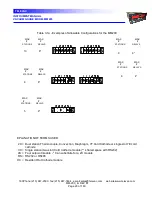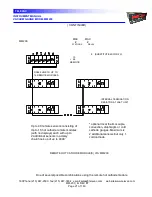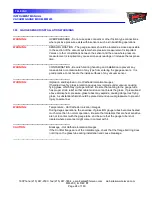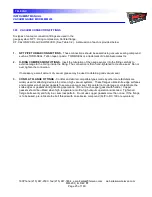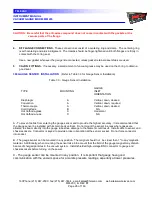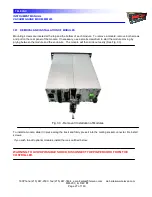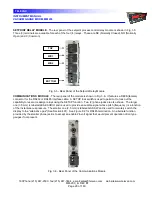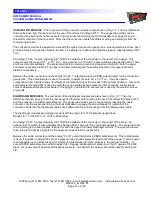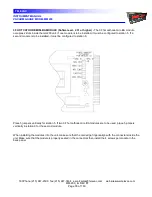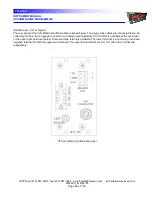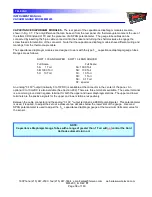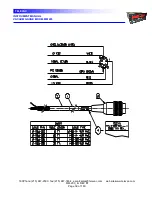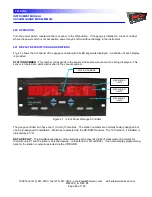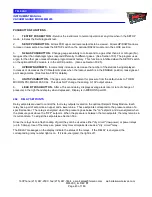
INSTRUMENT MANUAL
VACUUM GAUGE MODEL MM200
160Phone:(215) 947-2500 fax:(215) 947-7464 e-mail:[email protected] web site:www.televac.com
MM-200_im REV M
Page 31 of 160
TELEVAC
CONVECTION MODULE
- The rear panel of the convection module is also shown in Fig. 3.7. The only difference
that can be seen from the rear panel is the use of the letters CV instead of TC. The gauge tube cables can be
connected by inserting the cable connector into the socket and turning the shell clockwise to engage the screw
threads for retention of the connector. Note that the convection cable has different wiring and markings from the
thermocouple cable.
The convection module is designed to work with the type 4A convection gauge tube. Special electronics have been
provided in the 4A convection module to allow it to operate up to above atmospheric pressure (approximately 1000
Torr).
An analog "0-10V
" output (normally 0 to 10VDC) is available at the connector in the center of the panel. This
output covers the range of 10
-3
to 10
+3
Torr. An a optional 0 to 10 mvDC is also available (See Section 902). There
are three terminals available. The center terminal is a common ground and negative terminal for both the upper
and lower convection stations. The upper and lower terminals are the positive signals for the upper and lower
stations, respectively.
Between the cable connector and the analog "0-10V
" output terminal is a ZERO potentiometer for the convection
gauge tube. This potentiometer is used, if required, to adjust the zero at 1 x 10
-5
Torr. It can be used to
compensate, over a limited range, for effects of contamination from the process in the vacuum chamber. A second
potentiometer marked ATM is used to adjust the gauge at atmospheric pressure. This should be set the known
value of absolute atmospheric pressure on the gauge - not referred to sea level as is used by the weather bureau
or airports.
DIAPHRAGM MODULES
- The rear panel of the diaphragm modules are also shown in Fig. 3.7. The only
difference that can be seen from the rear panel of a thermocouple module is the use of the letters DI instead of TC
and the presence of a SPAN potentiometer. The gauge tube cables can be connected by inserting the cable
connector into the socket and turning the shell clockwise to engage the screw threads for retention of the
connector. Note that the diaphragm cables have different wiring and markings from the thermocouple cable.
The diaphragm modules are designed to work with the type 1E or 1F diaphragm gauge tubes.
Range 1E: 1 to 1000 Torr; 1F: 1000 to 9999 mbar.
An analog "0-10V
" output (normally 0 to 10VDC) is available at the connector in the center of the panel. An
optional 0 to 10 mvDC is also available (See Section 902). There are three terminals available. The center terminal
is a common ground and negative terminal for both the upper and lower diaphragm stations. The upper and lower
terminals are the positive signals for the upper and lower stations, respectively.
Between the cable connector and the analog "0-10V”
output terminal is a ZERO potentiometer. This potentiometer
is used, if required, to adjust the zero at a pressure two decades below the lower limit of the gauge. It can be used
to compensate, over a limited range, for effects of contamination from the process in the vacuum chamber. A
second SPAN potentiometer is used to adjust the 1E gauge at atmospheric pressure or the 1F gauge at 10,0000
mbar. A known value of absolute atmospheric pressure - not referred to sea level should be used for setting the
1E.




